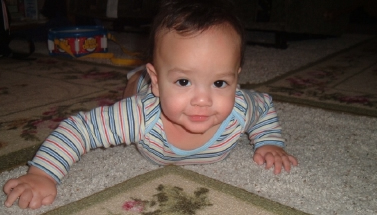|
Spirit Lake Consulting, Inc. 's Virtual Library
Spina Bifida
“Spina bifida (SB) is a neural tube defect (a disorder involving incomplete development of the brain, spinal cord, and/or their protective coverings) caused by the failure of the fetus's spine to close properly during the first month of pregnancy. Infants born with SB sometimes have an open lesion on their spine where significant damage to the nerves and spinal cord has occurred. Although the spinal opening can be surgically repaired shortly after birth, the nerve damage is permanent, resulting in varying degrees of paralysis of the lower limbs.
Even when there is no lesion present there may be improperly formed or missing vertebrae and accompanying nerve damage. In addition to physical and mobility difficulties, most individuals have some form of learning disability.
|
|
 |
|
|
The three most common types of Spina Bifida are: myelomeningocele, the severest form, in which the spinal cord and its protective covering (the meninges) protrude from an opening in the spine; meningocele in which the spinal cord develops normally but the meninges protrude from a spinal opening; and occulta, the mildest form, in which one or more vertebrae are malformed and covered by a layer of skin. SB may also cause bowel and bladder complications, and many children with Spina Bifida have hydrocephalus (excessive accumulation of cerebrospinal fluid in the brain).” (Click here to go to the National Institute on Neurological Disorders and Stroke website that discusses Spina Bifida).
How often does Spina Bifida occur?
Spina Bifida occurs in 7 out of every 10,000 live births in the United States, which means that there more than 70,000 people with Spina Bifidan in the country.
Who is at risk for Spina Bifida?
Anyone can have a child with Spina Bifida. According to the Center for Disease Control. Some groups at higher risk. These include:
• Women who have had a previous pregnancy with a neural tube defect are approximately 20 times as likely to have a child with a neural tube defect such as Spina Bifida as women with no previous history;
• Mothers with insulin-dependent diabetes;
• Mothers who use certain anti-seizure medication (Valproic acid/Depakene, and Carbamazapine/Tegretol);
• Mothers with obesity (click here to go to the page on obesity)
• High temperatures in early pregnancy (i.e., prolonged fevers and hot tub use);
• Low income.
What can be done to reduce the risk?
If all women who could become pregnant were to take a multivitamin with the B-vitamin folic acid, neural tube defects could be reduced by up to 70%. Since pregnancies often happen unplanned, women of childbearing age - even if they are not planning to get pregnant - should take folic acid every day. Women who have had a pregnancy affected by a neural tube defect like Spina Bifida need a larger prescription dose of folic acid daily when planning a pregnancy.
|
|
|

